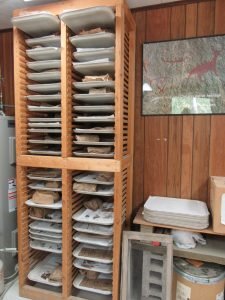
Although excavation ended at Michilimackinac in August, archaeological research continues year-‘round. All of the artifacts recovered during the field season must be washed, labeled with a number identifying the context from which they came, identified, counted or weighed, and stored in the Petersen Center. All of the catalog information is entered into the ARGUS collections database. These steps all take time. Washing and labeling, which begins on rainy days in the summer, was completed in October. Cataloging and data entry were completed in February, and storage in March.
Cataloging is the most interesting step of the winter process. Some artifacts are not recognized until they have been cleaned; others require additional research to identify. Sometimes it is instructive just to see all of the artifacts of one kind together. So what did we learn in the lab this winter?
It really was the summer of gunflints. We knew in the field that we had found a lot, but once they were all together, the grand total was thirty-
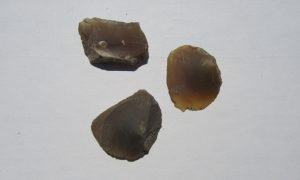
six! We also found fifteen musket balls of various trade gun calibers. Although everyone on the archaeology staff found at least one gunflint, the majority of the flints and balls were found in the northwest section of the excavation. Fishhooks are another trade good related to food procurement, and we found four nearly intact large fishhooks this summer.
A trade silver brooch and triangular pendant were fairly well publicized when discovered during the summer, but they were not the only trade silver found in 2017. Two closed-end cones, that
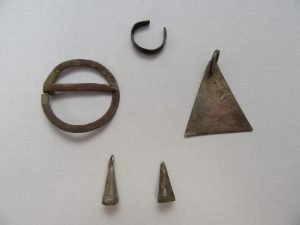
could be a matching pair, and a small cuff were also recovered.
Personal adornment items seemed down in the field, with no cufflinks, and only one small intact
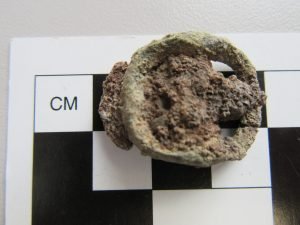
buckle found. Once everything was assembled, it turned out that at least seven different buttons had been found. Two plain pewter buttons were intact, but parts of four different brass crown designs were represented, as well as a metallic-thread-wrapped bone button.
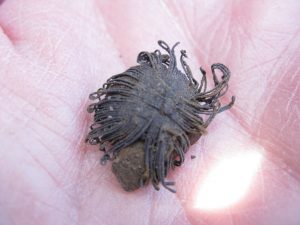
The most surprising artifact identified in the lab was part of a brass and paste/glass cross. It consisted of a faceted square blue set with faceted round blue sets on three sides of it, all in a brass frame with a hole on the fourth (bottom) side of the square set. A teardrop-shaped paste set framed in brass would have been attached via the hole, forming the long arm of the segmented cross. Intact examples are known from a Wea village in Indiana and the Matanceros shipwreck in the Caribbean.[1] The cross could have been an earbob or a pendant. A similar fragment with green sets was found at Michilimackinac in 1963.
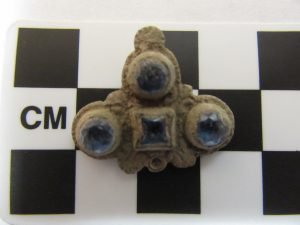
Other artifacts are still mysteries. The most notable is half of a cast brass tube, three inches long. One end is flared, the other is at least partially closed. The outside of the tube has two raised, flay sections and one segment has cast decorative rays.
Planning is now underway for the 2018 field season, which will begin June 9.
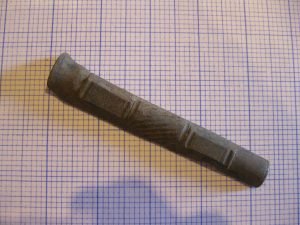
[1] Kent, Timothy, 2001, Fort Pontchartrain at Detroit; A Guide to the Daily Lives of Fur Trade and Military Personnel, Settlers, and Missionaries at French Posts. 2 vols. Silver Fox Enterprises, Ossineke, Michigan. Pg.955.
Deagan, Kathleen, 2002, Artifacts of the Spanish Colonies of Florida and the Caribbean 1500-1800. Volume 2: Portable Personal Possessions. Smithsonian Institution Press, Washington. Pg. 172.









